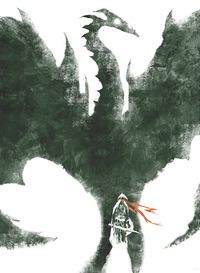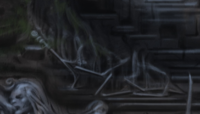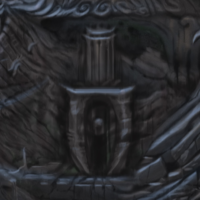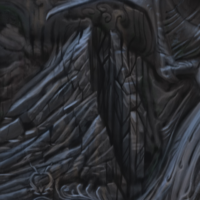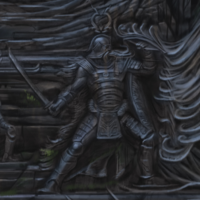Lore:Prophecy of the Dragonborn
The Prophecy of the Dragonborn is an ancient prophecy said to originate in an Elder Scroll, although it is sometimes also attributed to the Akaviri. It speaks of numerous times of strife and the eventual return of Alduin, culminating in the appearance of a Dragonborn to deliver the world from doom.[1][2] There have been many attempts in history to decipher the prophecy, but it was only in the early Fourth Era that all of its omens were fulfilled.[1]
The Prophecy[edit]
When misrule takes its place at the eight corners of the world
When the Brass Tower walks and Time is reshaped
When the thrice-blessed fail and the Red Tower trembles
When the Dragonborn Ruler loses his throne, and the White Tower falls
When the Snow Tower lies sundered, kingless, bleeding
The World-Eater wakes, and the Wheel turns upon the Last Dragonborn.
Alduin's Wall[edit]
The Prophecy of the Dragonborn was recorded on Alduin's Wall - a large Akaviri mural found within Sky Haven Temple. As foretold in the prophecy, the five key historical events that would preface Alduin's return are depicted.[3]
The first half of Alduin's Wall depicts the historic events of the Dragon War and the banishment of Alduin by the ancient Nord heroes. The other half foretells the omens. These include:
The Staff of Chaos[edit]
- "When misrule takes its place at the eight corners of the world..."
This omen refers to the Staff of Chaos - a powerful relic that could open gateways to other worlds and obliterate all living beings. In the late Third Era, the Imperial battlemage Jagar Tharn used the staff to imprison the Emperor Uriel Septim VII within the realm of Oblivion, after which he broke it into eight pieces and scattered them across Tamriel.[4]
Numidium and the Warp in the West[edit]
- "When the Brass Tower walks and Time is reshaped..."
The depiction of the Numidium relates to the second omen in the prophecy. The enormous brass golem was reassembled and activated during the late Third Era. Time reshaped when each of the seven powers in the Iliac Bay took ownership of the golem—simultaneously—and each of them achieved their goals to some degree.[5] A paradox later known as the Warp in the West.[6][7]
The Red Year[edit]
- "When the thrice-blessed fail and the Red Tower trembles..."
The third omen of the prophecy foretells of the fate that would befall the Tribunal at the hands of the Nerevarine in the late Third Era.[8] The fulfilment of the Nerevarine Prophecy resulted in Vivec, Almalexia and Sotha Sil losing their immortality. This in turn caused Baar Dau to resume its long-delayed fall, obliterating the city of Vivec and causing Red Mountain to erupt.[9]
The Oblivion Crisis[edit]
- "When the Dragonborn Ruler loses his throne, and the White Tower falls..."
The fourth omen foretold by the prophecy is the assassination of Emperor Uriel Septim VII, resulting in the Oblivion Crisis.[10] The fall of the White Tower refers to the capture and sacking of the White-Gold Tower during The Great War between the Empire and the Aldmeri Dominion.[11]
Skyrim Civil War[edit]
- "When the Snow Tower lies sundered, kingless, bleeding..."
The final omen that heralds Alduin's return refers to the bloody civil war that erupted in Skyrim after the death of the High King Torygg in the early Fourth Era.[12] The tallest mountain in Skyrim, the Throat of the World, is depicted on Alduin's Wall as cleft in half.
Last Dragonborn[edit]
- "...the World-Eater wakes, and the Wheel turns upon the Last Dragonborn."
The prophecy ends with the awakening of Alduin and the appearance of the Last Dragonborn, both events that came to pass in 4E 201. Alduin emerged from the Time Wound at the summit of the Throat of the World and sought to resurrect his kin, while the Last Dragonborn was discovered when repelling a Dragon attack in Whiterun Hold.[12]
Gallery[edit]
References[edit]
- ^ a b The Book of the Dragonborn — Prior Emelene Madrine
- ^ Esbern's dialogue in Skyrim
- ^ Alduin's Wall quest in Skyrim
- ^ Events of Arena
- ^ Events of Daggerfall
- ^ The Warp in the West — Ulvius Tero
- ^ Where Were You ... Dragon Broke — Various
- ^ Events of Morrowind
- ^ The Red Year — Melis Ravel
- ^ Events of Oblivion
- ^ The Great War — Legate Justianus Quintius
- ^ a b Events of Skyrim
